How to Use a Car Battery to Power Lights
This post may contain affiliate links.* Click here to read our affiliate policy.
 In a Pinch, a Car Battery Can Do More Than Start a Car.
In a Pinch, a Car Battery Can Do More Than Start a Car.
The power is out, and you have no idea how long it will be before it returns. Hopefully, you have a lights out box and know how to survive a power outage. But did you know your car's battery can supply you with quick access to power?
Want to save this post for later? Click Here to Pin It On Pinterest!
In fact, if the power is out for a long period of time, you could join together multiple car batteries to create a power bank. But you'll have to do a little homework and some advance planning first.
Off-Grid Power Alternatives
There's no lack of off-grid power options. Many people rely on solar power, some combine that with wind, and a few use the current from a creek or river. But all of those installations are complex and expensive projects. This is about pulling together an improvised power backup for as little cost as possible with a reasonable amount of work.
However, recharging your improvised power bank during a power outage may require alternative energy sources like solar or wind or even hand-cranked or foot pedaled power generation, so you're not out of the solar woods yet.
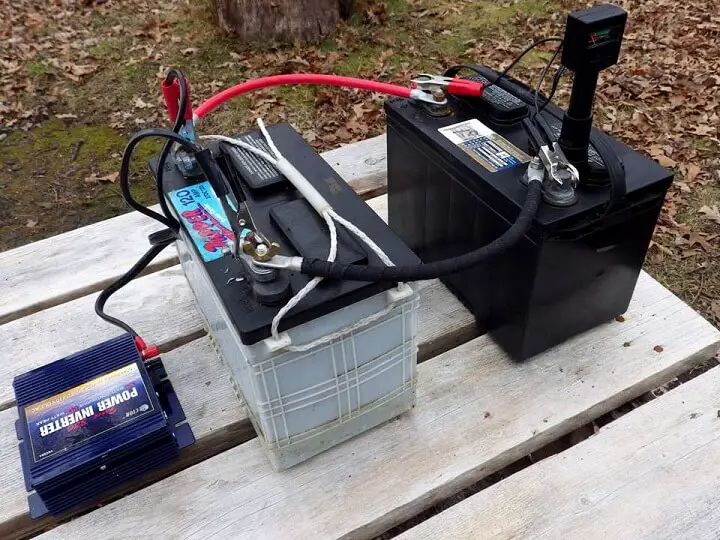
Before You Yank That Battery Out of Your Car…
Stop and think about what you're trying to do. If it's a simple, short-term task, you may be better off leaving the battery under the hood. Your car is designed to recharge your battery every time you start it.
If you just want to recharge a cell phone or computer battery, many cars have built-in USB ports or at the least a cigarette lighter plugin. This assumes you have the USB cable or lighter plugin, but as long as there's gas in the tank, your car could be your charging station. Better yet, almost every car has a radio, so you can keep up on the news while you recharge.
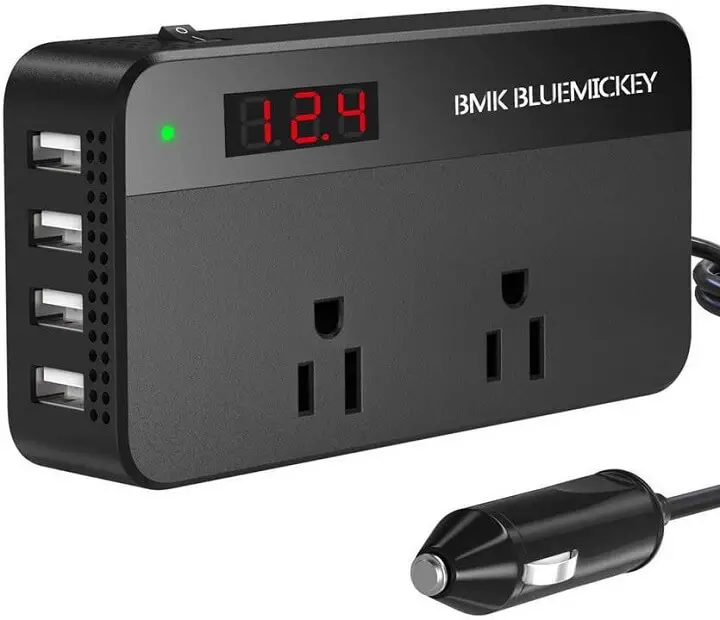
If you need to power something like a tool or appliance with alternating current, you could attach a small AC inverter under the hood or your cigarette lighter plug and use your appliance on a bench or table next to your vehicle. This assumes smaller, simpler, short-term use. If it looks like you're out of power for the long haul, you may need to consider the next step.
From a Single Battery to a Power Bank
A power bank is two or more car batteries linked together with cables to hold more power in reserve and to boost the power. Creating a power bank is a little complicated, but if you understand the fundamental dynamics of what you're doing, you should be able to master it in a day or two.
A Remote Power Option
If you have a remote cabin, barn, or shed without power and it's too far away for an extension cord, you could also consider a car battery power bank as a power source. You could recharge the batteries at home or use your vehicle as a remote charging station for your remote battery bank, that way you can use power tools or anything else that requires electricity.
Then again, a couple of solar panels on the roof or a generator alone would do the trick, but they're still somewhat expensive.
It's a Low-Cost Power Option
It's somewhat easy to salvage batteries from junkyards, and that's a good place to start. You may have to add dilute sulfuric acid and they'll probably need to be cleaned up, but if you can find some car batteries on the cheap, you're more than halfway to an emergency power bank. Just make sure you do some research on reconditioning car batteries before you hit the junkyard.
Lead-Acid Batteries 101
A battery is an electrochemical energy storage device that uses chemistry to store potential energy measured in volts. The first lead-acid battery was invented by French physicist Gaston Plante in 1859. The same technology is still used today. The basic design of a standard 12-volt lead-acid car battery consists of six lead galvanic cells connected in series and housed within a battery case.
An acidic electrolyte is added as a diluted solution of sulfuric acid. Concentrations vary but are generally less than or equal to 40%. The acid solution creates negatively charged sulfate ions and positively charged hydrogen ions that interact with the lead plates to hold an electric charge.
Before You Buy a Lead-Acid Battery from the Junk Yard…
Before you yank a battery out of the junkyard it's a good idea to assess the condition of the battery. Whenever doing any testing or maintenance on a car battery wear protective eyewear, thick gloves, and a long sleeve shirt. Sulfuric acid is not user-friendly stuff and lead's not much better.
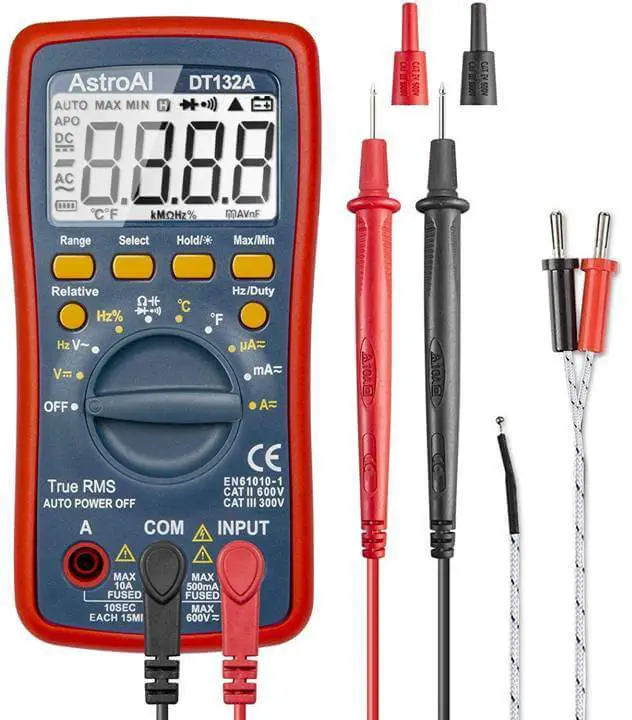
You'll also need a voltmeter to measure the current charge (if any) and a hydrometer to assess the sulfuric acid concentration in the dilution. Both testing tools come with instructions on how to assess a battery's condition.
If the battery checks out you're good to go and load it up for further work at home, although some junkyard batteries show little or no charge if they have been in the junkyard for a long time.

Maintaining Lead-Acid Batteries
Some car batteries are maintenance-free. Others aren't. The simple fact is that most lead-acid batteries require regular maintenance. The primary thing you want to assess is the fluid in the battery and corrosion on the terminals.
- To remove any corrosion, mix up a paste of baking soda and water and coat the terminal. Use a metal brush to remove the corrosion. Wear all of your safety gear.
- The fluid level should be over the top of the lead plates. You usually add distilled water because the sulfuric acid tends to remain in the dilution. Often there are marks on the battery case indicating ideal fluid level. It's the water that evaporates. However, it's a good time to use your hydrometer to assess the sulfuric acid dilution and if it's low, add sulfuric acid. Carefully. Measure your water/acid dilution with the hydrometer as you go.
- Inspect the battery case. The batteries should always be kept dry and show no signs of cracks or fissures. If it does, leave it in the junkyard. If you already own it, take it to a store that sells batteries and they'll recycle it. They may charge you a fee, but it's illegal to simply throw any lead-acid battery away.
DC Versus AC
DC stands for "direct current." AC stands for "alternating current." They are not compatible and anything you plug into a wall with a standard plug will not run on direct current. Direct current is low voltage compared to alternating current.
Most car batteries run at 12 volts, although other batteries produce voltage (V) at a range from 1.5V, 3.7V, 6V, 9V, 12V, 24V, and up. Alternating current runs at 110 or 220 volts.
Most things in our homes that plug into an electrical outlet are running at 110 volts. Large appliances and equipment like ovens and well pumps run on 220 volts. Don't even think about powering an oven or well pump with an improvised car battery power bank. Even a whole-house solar installation is challenged with that level of power demand.
The advantages and disadvantages are complex, but the telegram is that something designed to work on DC will not work with AC unless it is stepped down with a DC converter. That thing you plug into the wall when recharging your cell phone with a USB cable is a DC converter that reduces the high AC voltage to DC to recharge your phone or laptop.
On the other hand, lights and appliances that plug into a wall outlet won't work when connected directly to DC power. In that instance, you need an AC inverter. It steps up the voltage to 110 volts to power lights and anything else designed for AC.
AC Inverters
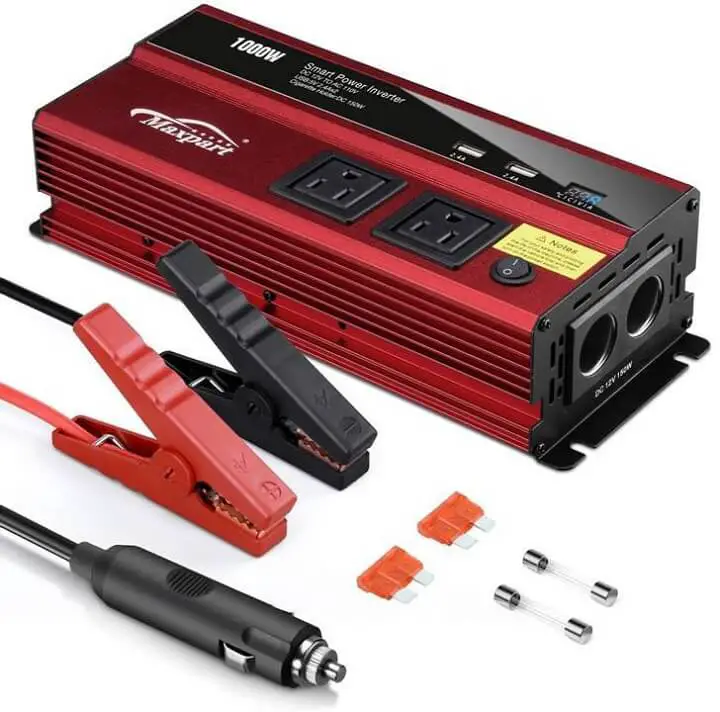
Based on the assumption that you're going to be using your battery power bank to run tools, lighting, and other standard electrical equipment, you'll need to buy a serious AC inverter. They're sold at hardware stores and on the Internet and are relatively inexpensive.
They all feature standard outlet plugs and most are designed to provide 110 volts. Some even have a USB outlet for direct connection to DC power for recharging small batteries in electronics.
The important thing to look for on an AC inverter is that it is designed as a "12-volt to 110-volt converter." Inverters are designed for a range of voltage, and a standard car battery runs at 12-volts.
You also want the option of cable clamps to clamp directly to the battery terminals in addition to a plug-in connector for the cigarette lighter jack and a USB port so you can directly plug in phone and laptop recharging cables.
Keep an eye on the wattage rating as well. It makes sense to get an AC inverter rated for up to 1,000 watts. Running anything at that wattage for any period of time will put a fast drain on your batteries, but at least you have the option. In fact, if you run too much power from the batteries they can overheat and possibly explode.
Be aware that AC inverters are rated on peak output and continuous output. The continuous output is the most important measure. Peak output is designed to run for minutes or less while a motor gets up to speed. Unfortunately, some manufacturers only feature the peak output in their product descriptions. Also, make sure you read the inverter instructions carefully before hooking it up.
Volts, Amps, Ohms and What about Watts?
And now for some electrical rocket science. The three most basic units in electricity are voltage, current, and resistance. Voltage is measured involts, current is measured inamps, and resistance is measured inohms.
The easiest way to understand this is to think of a water pipe. The voltage is the water pressure. The current is the flow rate, and the resistance is caused by the pipe size. In electricity, this is how electric power is delivered over wires, and the total result is measured in wattage or "watts."
The reason it's important to understand those basic concepts is because of how they will affect the performance of your improvised power bank. It will affect decisions on what size wires you use to hook things together (the size of the pipe affecting resistance or ohms), how many batteries you'll need in your bank (affecting the amount of power running from your system in volts), and the overall flow of electricity that results (how much electricity the system will deliver measured in amps).
All of these factors affect what kind of appliance you can power and how many. We'll get into some equations that can help you calculate usage and the power needed, but it's a good idea to look at some realistic uses for a car battery power bank.
Realistic Usage:
- Emergency medical equipment like a CPAP.
- Computer, modem, TV, DVD player, radio.
- Recharge most electronics including phones, computers, rechargeable flashlights, battery-powered tools, and other battery-powered/rechargeable electronic devices.
- Small appliances like a coffee maker/grinder, can opener, small microwave oven, blender, food processor, and other appliances with wattage in the low hundreds.
- Power tools like circular saws, drills, jigsaws, and others.
And Possibly…
Larger appliances tend to draw high wattage and do so over the long-term. They would also require a larger power bank with multiple batteries. You'll really have to do some math and evaluate your priorities if you want to power any of these:
- Refrigerator/freezer (you might want to switch off one or the other to reduce the watts needed).
- Toaster/toaster oven. They may look small, but they draw a lot of wattage.
- Larger microwave ovens.
And Then There's "Forget about it!"
There are some things that even the largest battery systems would find to be a challenge. This is in the category of some home equipment that runs on 220 volts. That's why dedicated off-grid homes with even the most sophisticated off-grid power systems use high-efficiency alternatives to many home appliances and equipment.
Here are some to not even consider for an improvised car battery power bank:
- Oven
- Well pump
- Any other 220-volt appliance like an electric furnace
- Water Heater (high wattage)
- Washer and dryer (high wattage)
Setting Up a Car Battery Power Bank
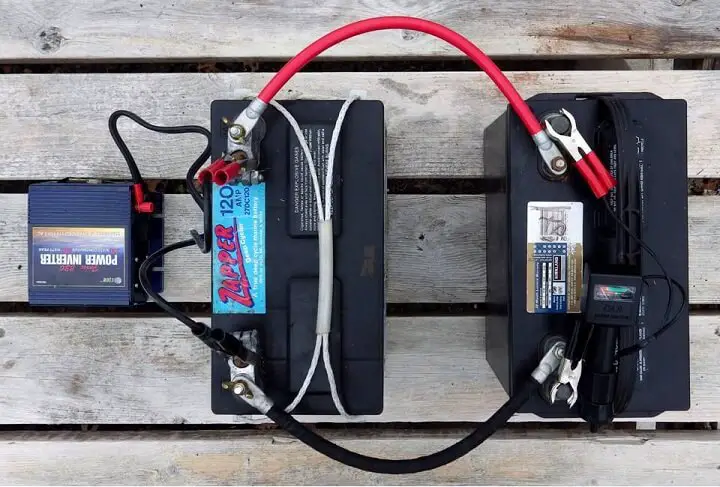
Step 1: Linking Batteries
The more batteries you use, the more power you can both store and have available. Each battery has a positive (+) and negative (-) post or connection. There are two ways to connect batteries depending on what you are trying to accomplish.
Connecting Batteries in a Series

To boost voltage, you connect the negative terminal of one battery to the positive terminal of the second battery. This doubles the voltage of two 12 volt batteries to 24 volts. If you did this with a third battery, you would boost the voltage to 36 volts and so on.
We're going to skip this step and connect batteries "parallel" to maintain 12 volts but boost amperage.
Connecting Batteries in Parallel
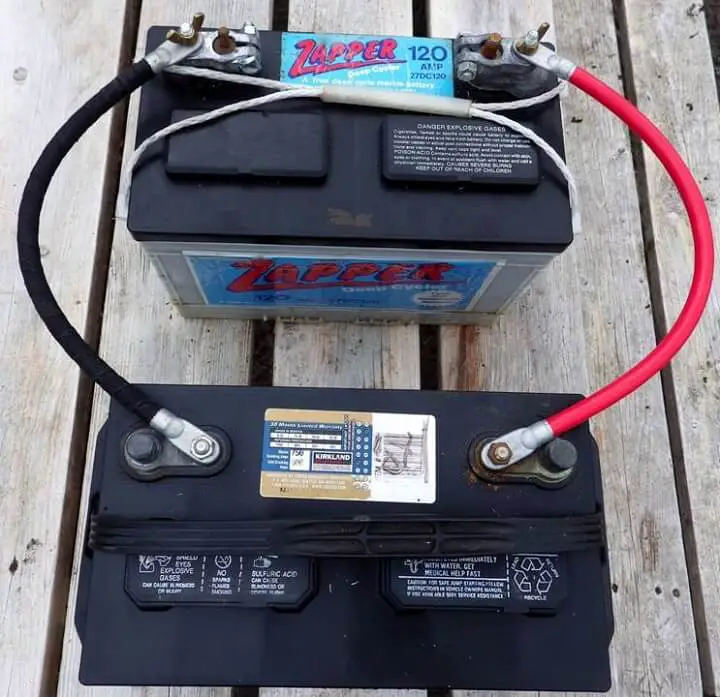
To connect batteries in parallel, connect the positive terminal from the first battery to the positive terminal on the second battery. Do the same with the negative terminals. Now you've essentially created a larger 12-volt battery. You maintain 12 volts, but if one car battery is providing 50 amps, the combination is now delivering 100 amps. Adding a third battery would boost the amperage to 150, and so on.
The benefit of boosting amperage is a boost in power. However, this is where the size of your connecting wires is important. Remember the plumbing analogy. A small wire is like a small pipe and the higher the energy or amps, the greater the friction in a small wire.
This could cause the wire to get hot, the plastic coating to melt, and the wire to arc with a spark. A 4 gauge wire is your best bet when boosting amps with a parallel connection. At least a 4 gauge wire is particularly important when you connect your battery bank to your AC inverter.
Step 2: Charging Batteries
When your battery bank is in a parallel series, you can charge the batteries by connecting the positive wire from your charging source to the positive post or terminal, and the negative charging wire to the negative terminal. The charge will travel across the wires to all of the batteries.
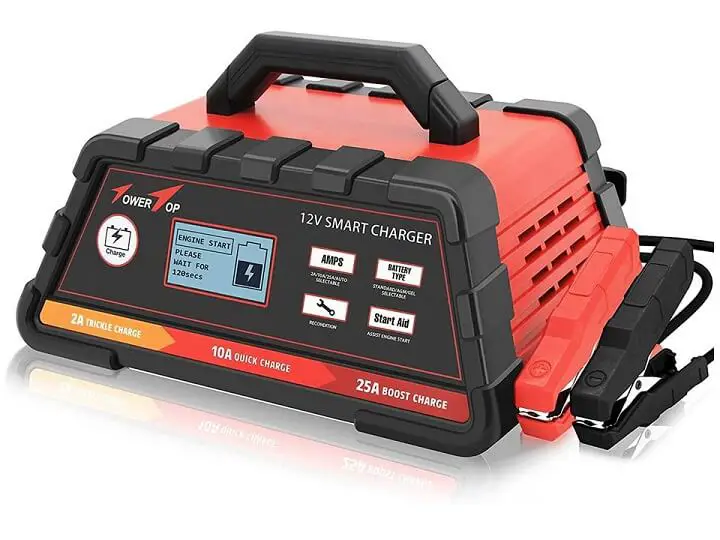
With An Electric Charger
- Flip the switch to 12 V. Some chargers have multiple volt settings so make sure you select the right setting.
- Choose the charge setting. Electric battery chargers vary so consult the instruction manual for proper usage.
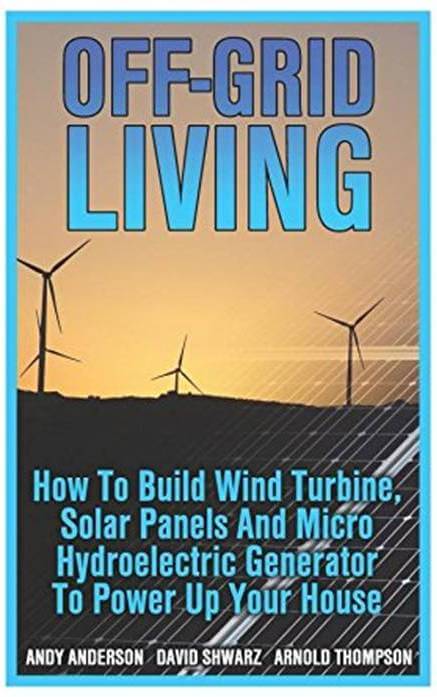
Solar/Wind/Crank Charging
- Whole books have been written about natural energy resources. If you are using this form of power to recharge, consult the solar/wind/crank manuals for how to effectively recharge batteries.
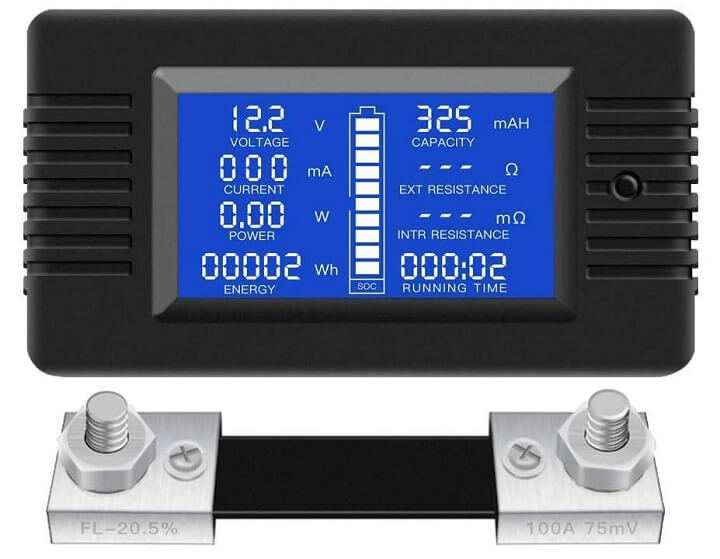
Monitoring The Charge
- Regardless of how you recharge, you need to monitor your progress. A battery recharging monitor can tell you when you've reached a full charge on your battery bank and track progress.
The 50% Rule
Ideally, lead-acid batteries should never go below a 50% charge. It rarely happens in a car because the car's alternator automatically recharges the battery every time the car runs. Batteries that are consistently drained below 50% will eventually fail. No one said this would be easy.
Step 3: Calculating and Measuring Charge
This is all about battery capacity, charging capacity, and how much power you'll draw from your battery reserves to not only power something, but also how long you can power something. Additionally, it's about long you'll need to recharge your battery bank. Be forewarned, it's complicated.
When we recharge a dead battery to restart a car, we attach the charger and charge it until it starts. At that point, the car's alternator takes over to further charge the battery. With a battery bank, there's no alternator to step in and take over the final recharge while powering the car's electrical systems.
Here again, you can use your battery recharging monitor to measure some of these factors, but it helps to understand the concept.
There are also meters on a car battery recharger that tell you when the battery is fully charged, but what if you're using solar or wind power for recharging? Here are some ways to calculate this.
Battery Capacity
Car batteries are rated by something called "reserve current." It identifies how much power the battery can store in amp hours. The average 12 volt car battery stores 50 amp hours. That means the battery will supply 1 amp for 50 hours.
You should know that reserve current varies across batteries. Deep cycle marine batteries have reserve currents in the 100's, so take the time to look at the labels on the battery. They should clearly identify the amperage.
The typical amperage draw for small power tools (drill, sander, jigsaw, etc.) is 2 to 8 amps. Larger power tools (router, circular saw, table saw, cutoff saw, etc.), draw 6 to 16 amps. Some tools such as large air compressors may need even more power.
As a result, a power drill running at 2 amps should have sufficient power from a car battery for 25 hours (50 amp hours ÷ 2 amps = 25 hours). But there's a catch. Car batteries should never be drained below 50% of their reserve current.
We don't think about it when the battery is connected under the hood because, once again, the alternator steps in to top off the reserve current. But a free-standing battery in a battery bank has no alternator as a backup. That means you really only have 12.5 hours of power for your power drill before your battery dips below 50%.
Some of us may just run that drill until the battery quits and call it a day and recharge the batteries. That's actually a bad idea. And if you are powering a piece of medical equipment like a CPAP or the simple electronics on a pellet stove in winter, you really want to know how long your battery power will safely last.
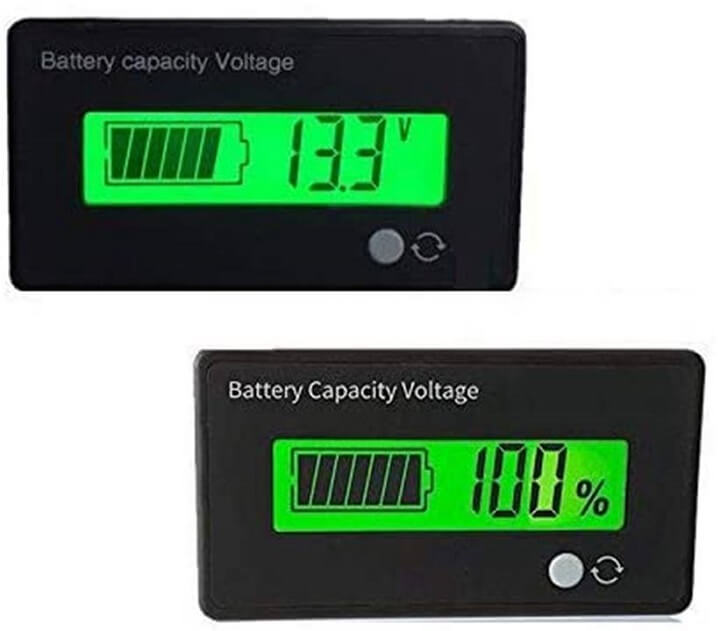
Your best bet is to keep a battery meter attached to your battery bank and keep an eye on the battery charge. When you reach 50%, it's time to recharge.
Charging Capacity
This is about estimating how long it will take to recharge your battery bank. It's all about the number of watts you are using to charge one battery. A standard plug-in battery charger runs at 100 watts. To determine how long it would take to fully charge a battery with a capacity of 200 amp hours, use this equation:
Number of watts ÷ 12 (volts) = amp hours
Here's an example using a standard battery charger at 100 watts:
100 watts ÷ 12 = 8.33 hours to charge.
However, charge rates vary. In fact, a slower charge reserves battery life so you're probably better off just monitoring your charge meter and figuring out your system as you go.
Step 4: Power Conservation
- If you're not using something, shut it off.
- Use high-efficiency light bulbs if you're using your power bank for any lighting.
- Take the time to determine the wattage and amps used by anything you're plugging into your power bank.
- After every use of your power bank, check the charge remaining and recharge if needed.
- The next time you buy an appliance or tool, see if there's an energy-efficient option.
Step 5: Safety Precautions
Lead-acid batteries are dangerous.
- When recharging, they give off hydrogen, a very flammable and explosive gas. Keep open flames, smoking, or any other fire or spark away from any lead-acid battery.
- They contain sulfuric acid that can burn you and blind you.
- They are filled with lead plates suspended in sulfuric acid that could also give you lead poisoning if the solution contacts the skin.
- Always wear safety protection around lead-acid batteries including gloves and eye protection.
- They are incredibly heavy. Carry them carefully or transport them on a cart or wagon.
- Never recharge in an enclosed living space and, even in a garage, provide some ventilation.
Is a Battery Bank a Good Idea?
Yes, if you take the proper precautions and take the time to understand the dynamics of handling and recharging lead-acid batteries.
If you don't have the time or the inclination to stop and think about how you're going to approach a battery bank project, you're probably better off looking at other alternatives to emergency electric power.
Like this post? Don't Forget to Pin It On Pinterest!
How to Use a Car Battery to Power Lights
Source: https://urbansurvivalsite.com/how-to-turn-a-car-battery-into-a-power-bank/
0 Response to "How to Use a Car Battery to Power Lights"
Post a Comment